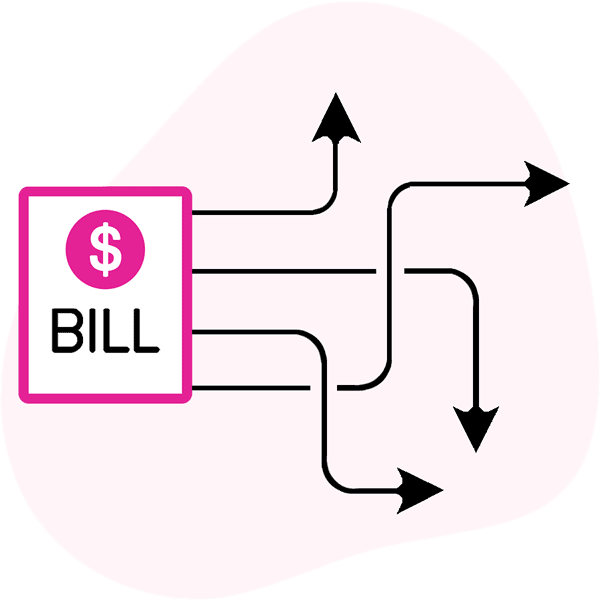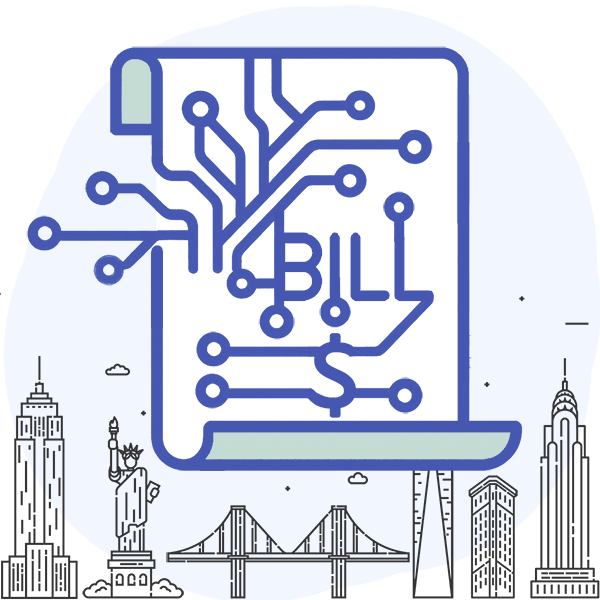Claims Admin & Clearinghouse Updates July 2025

For providers, knowing where to send your bills for workers’ comp treatment isn’t always as simple as it sounds.
With hundreds of entities playing distinct roles in the workers’ comp billing and payment process, every provider needs help determining who’s responsible for payment and how to get the bill to the right place.
That’s why we publish updates like the one below, detailing changes to:
- The claims administrators (aka: payers) responsible for paying workers’ comp bills for each employer, and
- The clearinghouse vendors that accept providers’ electronic bills (e-bills) on behalf of claims administrators
Review the tables below for the latest updates to ensure that your revenue management goes as smoothly as possible.
See the primer after the tables for a breakdown of the roles claims administrators and clearinghouses play in the workers’ comp system.
Employer Claims Administrator Updates
For the table below, the ‘Current Claims Administrator’ is responsible for paying for the treatment of injured employees who work for the ‘Employer’ as of the ‘Effective Date.’
We list the ‘Previous Claims Administrator’ for reference, but they are no longer responsible for issuing payment for treatment provided to the employer’s injured workers.
Each claim administrator below assigned new injury claim numbers to the claims they took over from the previous claims administrator.
Providers should call the current claims administrator to obtain the new injury claim numbers.
Employer |
Previous Claims Administrator |
Current Claims Administrator |
New Claim Numbers Assigned |
Effective Date |
City of Sunnyvale (CA) |
Keenan & Associates |
LWP Claims Solutions, Inc. |
Yes |
7/1/2025 |
Medline Industries, LP |
Broadspire Services, Inc. |
CorVel |
Yes |
7/1/2025 |
MV Transportation, Inc. |
Broadspire Services, Inc. |
ESIS, Inc. |
Yes |
7/1/2025 |
Electronic Billing Clearinghouse Update
For the table below, the ‘New Clearinghouse’ accepts and responds to e-bills on behalf of the ‘Claims Administrator’ as of the ‘Effective Date.’
Previously, the Claims Administrators (and one Network Payer) listed below did not accept e-bills, and therefore had not designated a clearinghouse.
Claims Administrator / Network Payer |
Previous Clearinghouse |
New Clearinghouse |
Effective Date |
Commonwealth of Massachusetts (MA) |
None |
Data Dimensions |
6/1/2025 |
Dallas Independent School District (TX) |
None |
Data Dimensions |
6/1/2025 |
North Carolina Farm Bureau Insurance Group |
None |
Data Dimensions |
6/1/2025 |
PayersDirect Network |
None |
Data Dimensions |
7/1/2025 |
Roles & Responsibilities
In workers’ comp billing, the claims administrator is the entity responsible for paying providers’ bills for injured worker treatment. The claims administrator may be:
- An insurer
- A self-insured, self-administering employer
- A Third-Party Administrator (TPA)
Most claims administrators lack the technology to accept and respond to e-bills compliantly, so they hire clearinghouses to do so on their behalf.
When sending e-bills to a claims administrator, it is imperative to route the bill to the correct clearinghouse—which is why daisyBill maintains direct electronic connections to all clearinghouse vendors that claims administrators use to accept providers’ e-bills.
Note that CorVel and the Department of Labor (DOL) are the only two claims administrators that do not use a clearinghouse vendor; these entities accept e-bills directly from providers. daisyBill also maintains direct e-billing connections to both CorVel and the DOL.
Our workers’ comp e-billing experts are here to help any providers (client or not) with questions about e-billing or e-bill delivery. Use the chat icon on this screen, or email us at info@daisybill.com
We make workers’ comp e-billing simple. Click below to see how daisyBill can save your practice time and money:
LEARN MORE: DAISYBILL
DaisyBill provides content as an insightful service to its readers and clients. It does not offer legal advice and cannot guarantee the accuracy or suitability of its content for a particular purpose.





.png)
.gif)